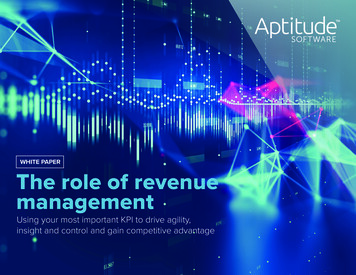
Transcription
WHITE PAPERThe role of revenuemanagementUsing your most important KPI to drive agility,insight and control and gain competitive advantage
The roleof revenuemanagementRevenue is one of the most important KPIs for an organization. A revenuemultiple may be used to value a company for an interested buyer, strategicpartner, or investor. Strong annual revenue growth underpins companyvalue, drives investments and new business generation, and may enticekey new talent to join. Failure to accurately account for revenue couldalso result in serious issues that can damage a company’s brand andjeopardize the business.Yet, most companies still manage revenue and revenue recognition compliance withExcel, a custom ERP solution, or a hybrid of the two. It’s often highly manual and requireslarge teams who can take a couple of weeks or more to complete monthly revenue closeactivities. Revenue team attrition is typically 30% or higher which has a damaging impacton performance.The revenue recognition standards, ASC 606 and IFRS 15, prompted many organizationsto establish new policies and controls and helped drive the creation of data foundationsrich with granular contract and revenue data. However, for many organizations these newapproaches and processes were shoehorned into legacy architectures or existing manualheavy solutions without attention to improving the revenue outcome or building newrevenue insight that would strengthen the business.With several years of global mergers and acquisitions resulting in complex and poorlyintegrated systems environments and today’s rapidly evolving business models requiringa constant stream of new product and service offerings, companies need to take a holisticapproach to compliance and revenue management. Between the pressure to bringdisparate data points together for analyzing and generating actionable insights, the drive toincrease revenue quality, and the ongoing evolution of revenue recognition interpretationand application, revenue has never been more complex or more important as a driver ofcorporate value.
Holistic revenue managementis a business differentiatorLook at any of the recent articles outlining 2020 CFO priorities andit’s clear that providing better business insights and more accurateforecasting is top of the list.81%of CFOs see identifyingareas of new value acrossthe business as their primaryresponsibilityA recent Accenture survey shows 4in high-performingorganizations, finance placesa higher priority on planningand insight generation versusexecutive managementKPMG’s 2019‘Future Ready Finance’ Survey.572%as automation continuesto rise, the role of financewill increasingly be aboutdelivering quality insights andsharing knowledge acrossdisciplinesDeloitte’s ‘Finance 2025’ survey6surveyed said that withinthe next 10 years financewill spend all their time onforward-looking insight andnone on backwards-lookingactivities, putting less emphasison historical reporting andmore on finding patternsinforming future decisionsACCA and PwC’s 2019 report,‘Finance: A journey to the future,’ 7And there are many more surveys that show finance departments are constantly trying to make the most out of valuabledata to drive smart decision making, accurate financial planning, and better forecasting to help their organizationsdramatically outperform their peers and thrive in the modern, digital business world.Effective revenue management can help drive the CFO 019/12/future-ready-finance-survey-infographic.pdf
Revenue accounting vs.revenue managementPICTURE THIS:A California-based, global leaderin cloud infrastructure & digitalworkspace technology, waslooking for insight into the businessevents that were holding up theflow of revenue to their P&L. Theirautomated revenue managementsolution allowed them to run areport each month to share withthe COO and CEO and found thatthe top 10 outstanding deliveryor training events could swingquarterly revenue by over 100M.All finance teams are familiar with the revenue recognitionstandards, ASC 606 and IFRS 15, which prompted manyorganizations to establish new policies and controlsaround revenue.But revenue recognition is just one part of the end-to-end revenuelifecycle, albeit an important one. Instead of taking a narrow, complianceonly view, revenue management should span the entire business –from product go-to-market, to sales operations and revenue accountingand into operations.True revenue management goes beyond the accounting function toimpact cross-functional teams throughout the organization. By leveragingthe rich data foundation that came out of compliance efforts to take amore holistic approach to revenue management, companies are drivingvaluable business outcomes, reducing risk, enabling accurate forecastingand providing strategic foresight to support business growth. In somecases, revenue management has a direct role in increasing the marketcapitalization of the company.And by delivering end-to-end revenue management, the CFO is seen asa trusted advisor, able to identify trends and analyze data to drive desiredoutcomes and sustainable, profitable business growth.
With the right systems in place to capture and unlock rich new data, a CFO can assess theoverall health and quality of a company’s revenue and quickly pinpoint areas that needaction or improvement. A ‘revenue health score’ may look at areas like:Revenue diversity:Revenue pace:Analyzing contract and revenue data can reveal excessivedependence on a single revenue source, business model,industry sector, region or demographic. This can spur acalibration towards sustainable profitability, development ofnew products, or entry into new territories.Analyzing the pace at which specific revenue streams arerecognized from sales order or contract signature to proof ofdelivery, to P&L can help identify and rectify revenue log jamslike credit score, fulfilment or product delivery/service issues.Measuring your revenue pace basically reflects the speed atwhich your sales will translate to your income statement or P&L.The determination of what is a ‘good’ versus ‘bad’ revenuepace is determined by the organization’s revenue objective– whether that is achieving maximum revenue per day orcustomer stickiness with long duration revenue commitments.Revenue cost:Analyzing the full costs associated with each sale or contractcan reveal true product profitability and uncover region or teambest practices, effectiveness of incentives like commissionor discount, and the amount of funding tied to a particularrevenue quality.Revenue loading:This is the ability to evaluate the financial impact of concessionsmade based on deal timing. This means analyzing how fastrevenue flows to the books during the period (month or quarter)and how much is sensitive to actions taken during the last fewdays or hours of the month. For example, higher than normallevels of discounting may occur to get the deal closed. Or akey event, like training, may need to be delivered before this‘pent up revenue’ can be reported. This can drastically impactprofitability. Analyzing revenue loading can help determine thelevel of back-end risk to the period and which type of productsor contracts exacerbate such risk. With this information, you cantake action to reduce risk and increase certainty of profit.Revenue conversion:Knowing how long revenue from contracts is sitting onthe balance sheet before moving to the P&L, can alert anorganization to take action and optimize balance sheet useand efficiency. For example, it may be that you can tweakyour business model to run on less working capital and divertthe savings in that area to product development and drivinginnovation for competitive advantage.
Revenuemanagementthroughout thecontract lifecycleAnalyze &REPORTDetermine productPRICINGReconcile & closeBy analyzing rich revenue and contractdata, the finance department can guideC-suite, product, marketing, and salesteams by providing data-informedinsights on how to improve revenuequality, pace, and profit while reducingrisk and funding at every stage in thecontract lifecycle.CaptureSUBLEDGERCONTRACTSManage TIONRevenue management is a multi-step lifecycle process that:1.Initiates with ‘go-to-market’ offering(pricing model input)2. Manages contract capture of obligations(single view of contracts and revenue burn)3. Manages and drives revenue from operations(outcomes)4. Delivers, along the way, accounting and audit trail fromRevenue rec and closeGo-to-marketSales operationsRevenue operations
Go-to-marketRevenue management should start as early as the go-to-market phase.By partnering with the product marketing and pricing teams, the revenueteam can use historical contract and revenue data to advise on the bestway to price and bundle a product or offer in a way that drives qualityrevenue and works with stated revenue recognition policies.PICTURE THIS:After putting in place an automated revenuerecognition solution, one of the largesttelecommunications companies in North Americafound they could use the detailed contract data toguide the creation of their product bundles.Since they regularly offered new plans andpackages to their 80M subscribers, theinvolvement of the revenue team ensured there wasno issue with revenue recognition after the offerlaunch and that the revenue it was driving was asadvantageous to the company as possible.Sales operationsRevenue management solutions can automate the capture ofcontract details and obligations, giving the company a single viewof contract data and revenue burn. This data can then add value tothe sales, operations and renewals process.Analysis may show, for example, that certain incentives orclauses in a sales contract slow down or speed up the paceof moving revenue to the P&L, allowing teams to make thenecessary adjustments and getting that revenue on thebooks even faster. Or it may show that too much revenue iscoming from a single product or region, posing a risk to theorganization.Making sure your revenue teams are equipped with theright analysis and working closely with your deal deskcan also lead to better business outcomes. Revenueteams can use data to help guide and train the dealdesk on how to align to the businesses’ overallrevenue strategy and understand how one-offincentives or specific deal structures can impact thequality of revenue. Revenue management gives youa single consolidated view of discount incentivesand their effectiveness.
Revenue accountingReconcile and closeRevenue accounting is at the core of revenuemanagement. With a smart revenue solution,accounting across multiple methods and reportingstandards is automated, allowing you to ‘walk’between the varying GAAPs and statutoryrequirements both for actual results and, moreimportantly, for forecasts that may not align toreporting standards with such central rigor andautomation. Automate revenue allocation acrossmultiple performance obligations or generate real-timeallocation for pricing analysis. Reduce revenue teamturn-over by reducing the dull, repetitive spreadsheetwork and allowing them to add value to the business.Taking a manual approach to reconciling and closeactivities can cost businesses significantly. Someorganizations have disclosed spending hundreds ofthousands a month and several weeks just to closethe books.Revenue recognitionAnalyze and reportAn automated revenue management solution canease the manual requirements of revenue recognitionand lead to more consistent company policyapplication consistency and better transparency forauditors, investors and business leaders. However,taking a holistic revenue management approach torevenue recognition has business benefits that gobeyond compliance. Take Standalone Selling Price,(SSP) which is required under the new standard.Insights gained from this new deep dive into contractswill grow the internal audience for financial reporting.Pulling data into one central hub gives finance anopportunity to serve multiple areas of the businesswith valued data-driven insights.Establishing fair value or product line SSP tends tobe completed annually, or quarterly, in a traditionalbusiness. Taking a month to complete 33,000 lines ina matrix to find SSPs isn’t unusual in large companies.For most companies, pricing is based on industrybenchmarks or some other estimate that can beproven in audit but isn’t great for accurate forecasting.With a revenue management solution in place thatdelivers operational intelligence, SSPs come togetheracross a global organization in one place. Accuracy isguaranteed because it is generated by monitoring whathas gone through the system. The organization nowhas a centralized record of every discount applied byregion, sales team, and so on and can analyze whetherthose discounts drove a positive or negative outcome.This the kind of information that differentiates andempowers the finance team within an organization.With the right revenue management solution inplace, revenue data and accounting are centralizedand managed efficiently by finance, reducing therisk of manual errors that spreadsheets introduce.Increased automation makes it easier to manageexceptions, review and approve allocations, andreview bookings and backlog.Reports are more detailed, forecasting more accurateand balances more transparent. Some financedepartments are exploring the concept of ‘FinanceData as a Service’ where finance-owned and certifieddata is made easily accessible to departments acrossthe organization through rich analytic tools, customdashboards, and standards-based interfaces.PICTURE THIS:An organization brings in anannual revenue of 20M froma monthly subscription-basedproduct. By analyzing contract andrevenue data, the revenue teamdetermines that offering a particularincentive in the contracting phaseresults in deals that close up to 2months faster than those that donot include the incentive. Afterincluding the incentive in allcontracts for this product goingforward, the organization adds anextra 1-2 months of subscriptionrevenue to every deal includingthe product, significantly increasingannual revenue.
RevenueRecognitionComplianceChallenges123Your organization may have checked the revenue recognition compliance box in time for the deadline,but may now be finding that the implemented Excel, in-house build, or ERP solution may not be robustenough to carry the organization into the future.Is your solution flexible and automated enough to address:Changing revenue recognition interpretationThe standard is specifically written to allow companies some flexibility regarding interpretation. As an organization changesand grows, they may choose to change the way they interpret the standard and a solution should allow this flexibility overthe long term.New business modelsInnovation is required to stay ahead of the competition and often this takes the form of new products and business models. Financecontrolled revenue recognition solutions remove the need for day to day IT involvement, empowering finance to self-configurerules and performance obligations and address issues in minutes.Disparate dataA more detailed, centralized data foundation is one of the benefits of revenue recognition compliance. If a solution is still relying onmanual workarounds like Excel to centralize and standardize data from source systems, it’s a missed opportunity for automation andwill hinder efforts to get maximum value from the data captured.Complex contract arrangements4Many organizations have complex arrangements with their customers that could result in varying accounting requirements bygeography, customer type, sales channel or even individual customer. These specific terms can be captured in the language of thecontract arrangement but not held with any of the upstream systems - like CRM or order management - that are used to support therevenue process. This means these terms typically need to be manually identified and input into the revenue recognition process.In addition, many contracts require modifications mid-term creating further accounting and revenue recognition complexities.
Recognizing the changingnature of financeGaining all the benefits highlighted in this paper requires the recognition that the natureof the finance function is changing. There are two key trends to highlight – the first isincreasing levels of automation. The second is hiring the finance teams of the future.AutomationFinance teams of the futureAs finance moves towards automating the 70-80% of finance tasks that arerepetitive, finance teams must be used in more transformative ways. Employeesand organizations are increasingly realizing that automation is not aboutreducing the workforce but about getting the most value out of employees andcreating an environment to retain and support them. In the KPMG survey citedabove, over 78% of respondents said they believe that AI (Artificial Intelligence)will enable existing finance staff to take on more value-added and strategic roles.Finance talent models are changing, with Deloitte finding, “a premium placedon data scientists, business analysts, and storytellers.with qualities including astrong customer service orientation, flexibility, and good collaboration skills—inaddition to the technical capabilities needed for specific jobs.” This will be asignificant shift for most organizations and require them to reskill existing staffand go outside their traditional hiring frameworks.Revenue is an area that is prime for automation and if a sizable portion ofrevenue management activities are still manual, it will not be possible to freeup the employee time necessary to make the most of analytics and data miningactivities and build relationships with other areas of the business.The in-house and external talent organizations will be looking to retain and hirewill not want 80% of their working day devoted to manual, repetitive work, soequipping teams with a platform for automation will be important to build thefinance teams needed for the future.
Benefits of revenue managementDrive business outcomesUnlock opportunitiesReduce riskuse revenue insights to identify necessary actions,increase the quality of the revenue and determinethe shape of the companyuncover new opportunities such as coststructures for new products or highly profitablegeographic marketsincrease revenue quality, and provide accuratereporting with full transparency to the regulatorsand to the marketIncrease market capitalizationOperational efficienciesStrategic foresightprovide investor confidence, increase valuationand credit ratings, deliver accurate statements andforecasts to the marketaccelerate speed of close, increase automationand reduce risk of error, redeploy staff to highervalue-added taskstransform the finance function, enabling them todeliver strategic guidance across the enterpriserather than just governance, and act as a trustedadvisor to the CEO by providing valuable, actionablebusiness insightConclusionTaking an active approach to revenue management can helporganizations surpass competitors and react with agility tomarket changes.Companies who implemented an automated revenue management solution as apart of their compliance efforts are reaping the rewards of increased automationand efficiency and better access to data for business insights.Learn agement
Aptitude Software provides software solutions that enable finance professionals to run their global businesses, forecastdecision outcomes, and comply with complex regulations. Uniquely combining deep finance expertise and IP richtechnology, Aptitude gives finance leaders the tools they need to transform their business and achieve their ambitions.Aptitude is proud to have served the offices of finance for over 20 years, delivering financial control and insight to createa world of financial confidence for our global clients.Aptitude Software supports businesses with combined revenues approaching 1 trillion and over 500 million endcustomers. Headquartered in London, Aptitude Software is an operating company of Aptitude Software Group plc.For further information, email us at info@aptitudesoftware.com or contact us:London (Headquarters)BostonRedwood ShoresOld Change House128 Queen Victoria StreetLondon EC4V 4BJSuite 1310101 Federal StreetBoston, MA 02110Suite 310100 Marine ParkwayRedwood Shores, CA 94065Tel: 44 (0)20 7496 8196Tel: 1 (857) 201-3432Tel: 1 (888) 738-0206SingaporeTorontoWrocławCentennial Tower, Level 173 Temasek Avenue039190 SingaporeSuite 7002 Bloor Street WestToronto, Ontario M4W 3R1ul. Muchoborska 654-424 WrocławPolandTel: 65 82282403Tel: 1 (416) 642 6508Tel: 48 71 35 83 010Copyright Aptitude Software Limited 2014 - 2020All Rights Reserved. APTITUDE, APTITUDE ACCOUNTING HUB, APTITUDEALLOCATION ENGINE, APTITUDE REVENUE RECOGNITION ENGINE, APTITUDEREVSTREAM and the triangles device are trademarks of Aptitude Software Limited.Aptitude – U.S. and European patents pending.For more information, please refer to:https:// ptitudesoftware.com
activities. Revenue team attrition is typically 30% or higher which has a damaging impact on performance. The revenue recognition standards, ASC 606 and IFRS 15, prompted many organizations to establish new policies and controls and helped drive the creation of data foundations rich with granular contract and revenue data.



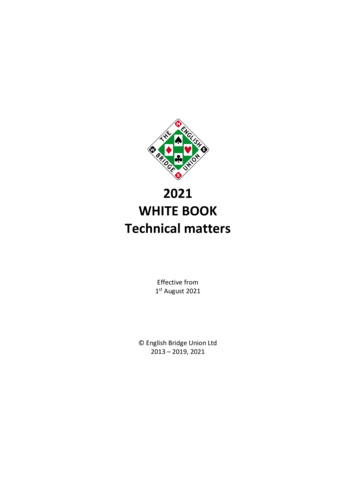
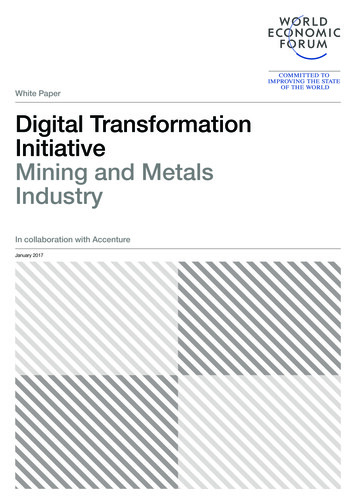
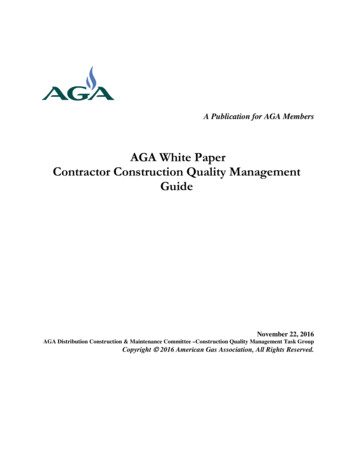
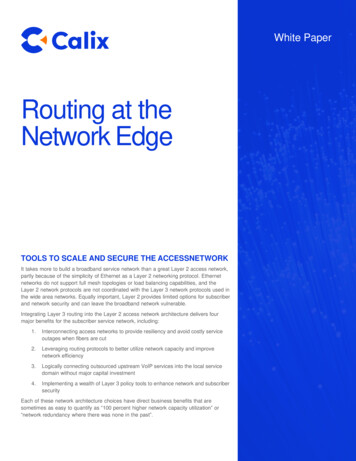

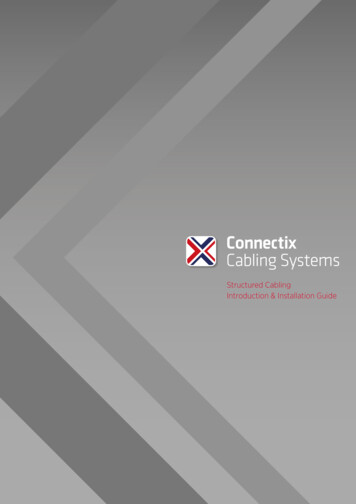
![[CLASS XII CHEMISTRY PRACTICALS]](/img/23/xii-chemistry-practical.jpg)

